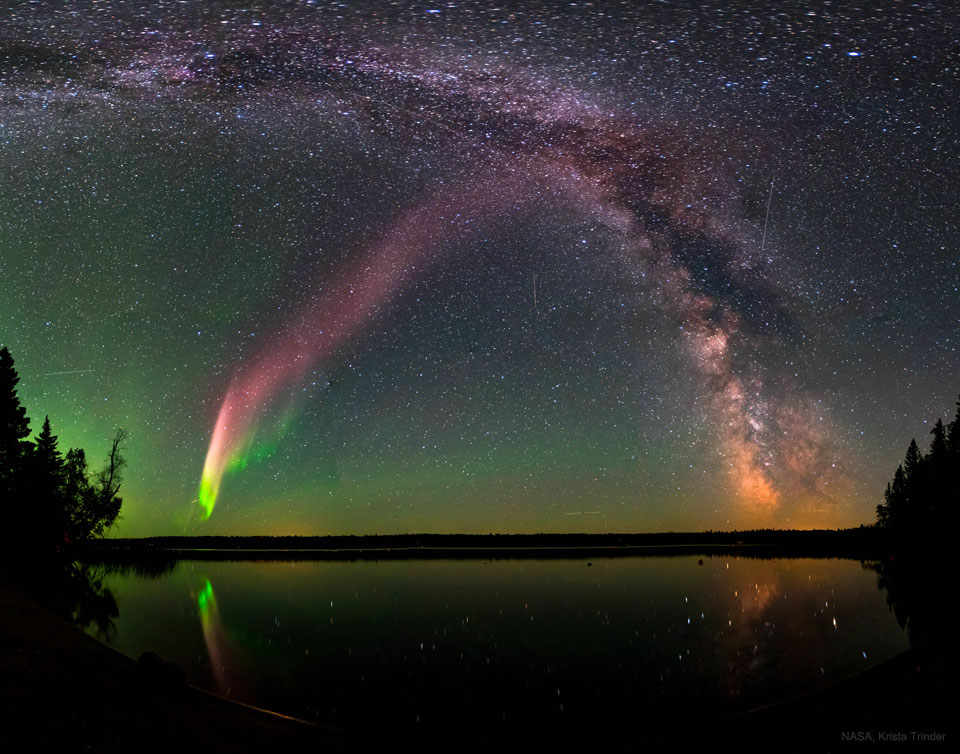
What's creating these long glowing streaks in the sky? No one is sure. Known as Strong Thermal Emission Velocity Enhancements (STEVEs), these luminous light-purple sky ribbons may resemble regular auroras, but recent research reveals significant differences. A STEVE's great length and unusual colors, when measured precisely, indicate that it may be related to a subauroral ion drift (SAID), a supersonic river of hot atmospheric ions thought previously to be invisible. Some STEVEs are now also thought to be accompanied by green picket fence structures, a series of sky slats that can appear outside of the main auroral oval that does not involve much glowing nitrogen. The featured wide-angle composite image shows a STEVE in a dark sky above Childs Lake, Manitoba, Canada in 2017, crossing in front of the central band of our Milky Way Galaxy.
from NASA https://ift.tt/3nw1fGu
Comments
Post a Comment